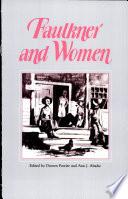
Cerca negli ebook:

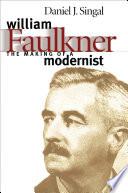
William Faulkner
Autore: Daniel J. Singal
Numero di pagine: 382Through detailed analyses of individual texts, from the earliest poetry through Go Down, Moses, Singal traces Faulkner's attempt to liberate himself from the powerful and repressive Victorian culture in which he was raised by embracing the Modernist culture of the artistic avant-garde. Most important, it shows how Faulkner accommodated the conflicting demands of these two cultures by creating a set of dual identities - one, that of a Modernist author writing on the most daring and subversive issues of his day, and the other, that of a southern country gentleman loyal to the conservative mores of his community. It is in the clash between these two selves, Singal argues, that one finds the key to making sense of Faulkner.
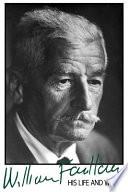
William Faulkner
Autore: David Minter
Numero di pagine: 348Minter shows that Faulkner's talent lay in his exploration of a historical landscape and that his genius lay in his creation of an imaginative one. According to Minter, anyone who has ever been moved by William Faulkner's fiction, who has ever tarried in Yoknopatawpha County, will find here a sensitive and readable account of the novelist's struggle in art and life.
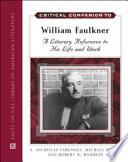
Critical Companion to William Faulkner
Autore: A. Nicholas Fargnoli , Michael Golay
Numero di pagine: 575As I Lay Dying; Light in August; The Sound and the Fury; Absalom, Absalom!; "The Bear"; and many others.
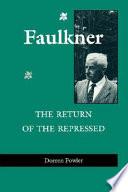
Faulkner
Autore: Doreen Fowler
Numero di pagine: 244Fowler exposes psychic conflicts that drive Faulkner's fiction and posits from them an underlying tension between the desire for difference and wholeness, between the mother and the father, between the living body and death.

William Faulkner à sa réception du prix Nobel
Autore: William Faulkner
Numero di pagine: 254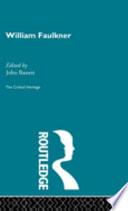
William Faulkner
Autore: John Bassett
Numero di pagine: 442William Faulkner (1897-1962). Writings include: Absolom, Absolom!, Intruder in the Dust, As I Lay Dying. Volume covers the period 1924-1957.
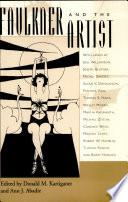
Faulkner and the artist
Autore: Donald M. Kartiganer
Numero di pagine: 376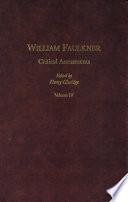
William Faulkner
Autore: Henry Claridge
Numero di pagine: 716This collection concentrates on earlier, less accessible material on Faulkner that will complement rather than duplicate existing library collections. Vol I: General Perspectives; Memories, Recollections and Interviews; Contemporary Political Opinion Vol II: Assessments on Individual Works: from Early Writings toAs I Lay Dying Vol III: Assessments on Individual Works: fromSanctuarytoGo Down Moses and Other Stories Vol IV: Assessments on Individual Works: from the Short Stories toThe Reivers; Faulkner and the South; Faulkner and Race; Faulkner and the French.
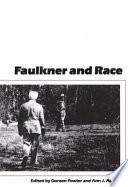
Faulkner and Race
Autore: Doreen Fowler , Ann J. Abadie
Numero di pagine: 332The essays in this volume address William Faulkner and the issue of race. Faulkner resolutely has probed the deeply repressed psychological dimensions of race, asking in novel after novel the perplexing question: what does blackness signify in a predominantly white society? However, Faulkner's public statements on the subject of race have sometimes seemed less than fully enlightened, and some of his black characters, especially in the early fiction, seem to conform to white stereotypical notions of what black men and women are like. These essays, originally presented by Faulkner scholars, black and white, male and female, at the 1986 Faulkner and Yoknapatawpha Conference, the thirteenth in a series of conferences held on the Oxford campus of the University of Mississippi, explore the relationship between Faulkner and race. With essays byEric J. SundquistCraig WernerBlyden JacksonThadious DavisPamela J. RhodesWalter TaylorNoel PolkJames A. SneadPhilip M. WeinsteinLothar HoumlnnighausenFrederick R. KarlHoke PerkinsSergei ChakovskyMichael GrimwoodKarl F. Zender
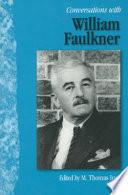
Conversations with William Faulkner
Autore: M. Thomas Inge
Numero di pagine: 252"When a writer passes through the wall of oblivion, he will even then stop long enough to write something on the wall, like 'Kilroy was here.'" William Faulkner was not keen on giving interviews. More often than not, he refused, as when he wrote an aspiring interviewer in 1950, "Sorry but no. Am violently opposed to interviews and publicity." Yet during the course of his prolific writing career, the truth is that he submitted to the ordeal on numerous occasions in the United States and abroad. Although three earlier volumes were thought to have gathered most of Faulkner's interviews, continued research has turned up many more. Ranging from 1916, when he was a shabbily dressed young Bohemian poet to the last year of his life when he was putting finishing touches on his final novel The Reivers, they are collected here for the first time. Many of these articles and essays provide descriptions of Faulkner, his home, and his daily world. They report not only on the things that he said but on the attitudes and poses he adopted. Some capture him making up tall tales about himself, several of which gained credibility and became a part of the Faulkner mythology. Included too are the...
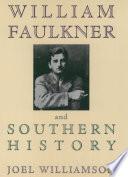
William Faulkner and Southern History
Autore: Joel Williamson
Numero di pagine: 539One of America's greatest novelists, William Faulkner, was a writer deeply rooted in the American South. In works such as The Sound and the Fury, As I Lay Dying, Light in August, and Absalom, Absalom!, Faulkner drew powerfully on Southern themes, attitudes, and atmosphere to create his own world and place--the mythical Yoknapatawpha County--peopled with quintessential Southerners such as the Compsons and Sartorises. Indeed, to a great degree perhaps unmatched by any other major twentieth-century novelist, Faulkner remained at home and explored his own region--the history and culture and people of the South. Now, in William Faulkner and Southern History, one of America's most acclaimed historians of the South, Joel Williamson, weaves together a perceptive biography of Faulkner himself, an astute analysis of his works, and a revealing history of Faulkner's ancestors in Mississippi--a family history that becomes, in Williamson's skilled hands, a vivid portrait of Southern culture itself. This book makes the writings of William Faulkner--often thought to be inscrutable--easily accessible to the general reader. Thoroughly researched and highly readable, it describes fully and clearly...
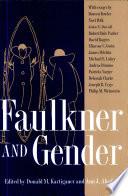
Faulkner and gender
Autore: Donald M. Kartiganer
Numero di pagine: 328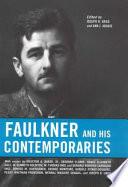
Faulkner and His Contemporaries
Autore: Joseph R. Urgo , Ann J. Abadie
Numero di pagine: 236A study of Faulkner's place among his peers
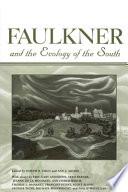
Faulkner and the Ecology of the South
Autore: Joseph R. Urgo , Ann J. Abadie
Numero di pagine: 208Essays that explore Faulkner's relationship to land, people, and the environment
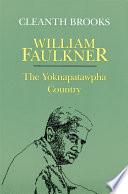
William Faulkner
Autore: Cleanth Brooks
Numero di pagine: 518Hailed by critics and scholars as the most valuable study of Faulkner's fiction, Cleanth Brooks's William Faulkner: The Yoknapatawpha Country explores the Mississippi writer's fictional county and the commanding role it played in so much of his work. Brooks shows that Faulkner's strong attachment to his region, with its rich particularity and deep sense of community, gave him a special vantage point from which to view the modern world.Books's consideration of such novels as Light in August, The Unvanquished, As I Lay Dying, and Intruder in the Dust shows the ways in which Faulkner used Yoknapatawpha County to examine the characteristic themes of the twentieth century. Contending that a complete understanding of Faulkner's writing cannot be had without a thorough grasp of fictional detail, Brooks gives careful attention to "what happens: In the Yoknapatawpha novels. He also includes useful genealogies of Faulkner's fictional clans and a character index.
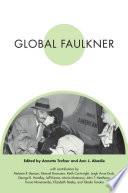
Global Faulkner
Autore: Annette Trefzer , Ann J. Abadie
Numero di pagine: 211Today, debates about globalization raise both hopes and fears. But what about during William Faulkner's time? Was he aware of worldwide cultural, historical, and economic developments? Just how interested was Faulkner in the global scheme of things? The contributors to Global Faulkner suggest that a global context is helpful for recognizing the broader international meanings of Faulkner's celebrated regional landscape. Several scholars address how the flow of capital from the time of slavery through the Cold War period in his fiction links Faulkner's South with the larger world. Other authors explore the literary similarities that connect Faulkner's South to Latin America, Africa, Spain, Japan, and the Caribbean. In essays by scholars from around the world, Faulkner emerges in trans-Atlantic and trans-Pacific contexts, in a pan-Caribbean world, and in the space of the Middle Passage and the African Atlantic. The Nobel laureate's fiction is linked to that of such writers as Gabriel García Márquez, Wole Soyinka, Miguel de Cervantes, and Kenji Nakagami.
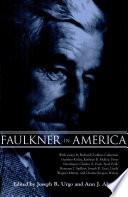
Faulkner in America
Autore: Ann J. Abadie
Numero di pagine: 236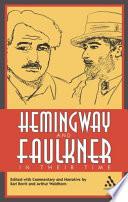
Hemingway and Faulkner in Their Time
Autore: Earl Rovit , Arthur Waldhorn
Numero di pagine: 210John Steinbeck Ernest Hemingway and William Faulkner are generally recognized as the most influential American novelists of the 20th century. Their careers paralleled one another in significant ways - two of their fledgling poems coincidentally appeared in the same avant-garde little magazine; they died a year apart, almost to the day; each won the Nobel Prize. It is as much biography as critique, a short, happy reference work that sometimes tells more about the commentators than their subjects. Among the writers on the writers, there is Sherwood Anderson, Gertrude Stein, Alice B. Toklas, Conrad Aiken, W. H. Auden, John Dos Passos, Ezra Pound, T. S. Eliot, and many others. This book is not only a valuable addition to literary scholarship, it is also a unique re-creation of an era in American culture.
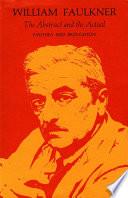
William Faulkner
Autore: Panthea Reid Broughton
Numero di pagine: 252William Faulkner was one of the few major writers of the period following World War I to retain a sense of the place of abstractions in life and in art. Faulkner saw life as a process of flux and change and abstractions as a means of either denying actuality or of coping with change and providing a solid touchstone in the flux. William Faulkner: The Abstract and the Actual is the first critical study of Faulkner to examine in depth the theme of evasion and distortion of existence through abstractions—a theme that can be found to a greater or lesser degree in every Faulkner novel. The book covers the entire seventeen-novel canon and includes discussions of a significant number of short stories. Its thematic organization points out the unity and continuity of Faulkner’s work. Examining the interrelationships between Faulkner’s fiction and modern thinking, Panthea Broughton shows the insight Faulkner had into the philosophical problem of the abstract versus the actual. She concludes that the central dilemma in Faulkner’s fiction—resistance to flux or change—is also one of the salient problems of the modern world.
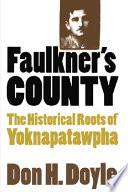
Faulkner's County
Autore: Don Harrison Doyle
Numero di pagine: 492This history of Lafayette County, Mississippi, uses William Faulkner's rich fictional portrait of a place and its people to illuminate the past. From the arrival of Europeans in Chickasaw Indian territory in 1540 to Faulkner's death in 1962, Doyle chronicles more than four centuries of local history. 27 illustrations. 3 maps.
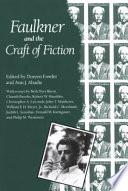
Faulkner and the Craft of Fiction
Autore: Doreen Fowler , Ann J. Abadie
Numero di pagine: 256The contributors, authorities on Faulkner's narrative, offer a wide variety of critical approaches to Faulkner's fiction-writing process
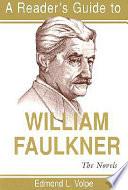
A Reader's Guide to William Faulkner
Autore: Edmond L. Volpe
Numero di pagine: 462A standard reference work in American literature, this volume is the most complete and detailed guide to the novels of William Faulkner. Edmond L. Volpe's aim is to reveal the greatness of Faulkner's art and the scope and profundity of his personal vision of life. He describes the dominant patterns in the fiction by isolating Faulkner's major themes and by analyzing his narrative techniques and style. He then offers extensive, individual interpretations of the nineteen novels, tracing the development of Faulkner's ideas, and includes a set of genealogical tables for each major family in the novels. Both scholarly and accessible:, this unique: treatment of Faulkner's novels—from Soldiers' Pay to The Reivers—helps the reader come to a thorough understanding of a great American writer.
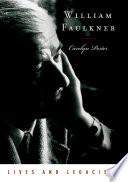
William Faulkner
Autore: Carolyn Porter
Numero di pagine: 208In this newest volume in Oxford's Lives and Legacies series, Carolyn Porter, a leading authority on William Faulkner, offers an insightful account of Faulkner's life and work, with special focus on the breathtaking twelve-year period when he wrote some of the finest novels in American literature. Porter ranges from Faulkner's childhood in Mississippi to his abortive career as a poet, his sojourn in New Orleans (where he met a sympathetic Sherwood Anderson and wrote his first novel Soldier's Pay), his short but strategically important stay in Paris, his "rescue" by Malcolm Crowley in the late 1940s, and his winning of the Nobel Prize. But the heart of the book illuminates the formal leap in Faulkner's creative vision beginning with The Sound and the Fury in 1929, which sold poorly but signaled the arrival of a major new literary talent. Indeed, from 1929 through 1942, he would produce, against formidable odds--physical, spiritual, and financial--some of the greatest fictional works of the twentieth century, including As I Lay Dying, Sanctuary, Light in August, Absalom, Absalom! and Go Down, Moses. Porter shows how, during this remarkably sustained burst of creativity, Faulkner...
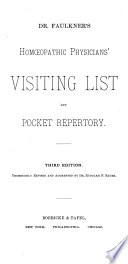
Dr. Faulkner's Homoeopathic Physicians' Visiting List and Pocket Repertory
Autore: Faulkner
Numero di pagine: 102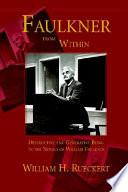
Faulkner from Within
Autore: William Howe Rueckert
Numero di pagine: 388Rueckert tracks Faulkner's development as a novelist through 18 novels--ranging from "Flags in the Dust" to "The Reivers"--to show the turn in Faulkner from destructive to generative being, from tragedy to comedy, from pollution to purification and redemption.
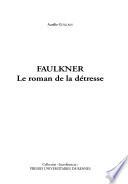
Faulkner
Autore: Aurélie Guillain
Numero di pagine: 304
Les erres du faucon
Autore: Marc Saporta
Numero di pagine: 411Cette étude qui vise à éclairer crûment les sources profondes d'un écrivain "torturé" est l'oeuvre de l'auteur de l'##Histoire du roman américain##. Elle découle de la conviction de Saporta que "toutes les clefs de l'oeuvre et de la personnalité de Faulkner sont contenues dans les contrevérités si abondamment répandues par l'écrivain sur lui-même" (p. 401). Stimulant mais discutable. Certaines affirmations font sursauter: Faulkner serait "profondément puéril" en dehors, voire à l'intérieur de ses créations littéraires (cf. p. 302).

William Faulkner
Autore: Gwendolyne Chabrier
Numero di pagine: 378L'hypothèse principale du livre de Gwendolyne Chabrier est que la compréhension que Faulkner a pu avoir des relations familiales à l'intérieur de ses romans a évolué en fonction de la conception que lui-même a pu se faire de sa propre famille tant parentale que maritale. Parti d'une représentation très sombre des relations familiales où la mésalliance, l'adultère et l'inceste sont le lot tragique des fratries, Faulkner se servant de son travail d'écriture comme d'une thérapie réparatrice, va parvenir au travers de ses romans au fur et à mesure de leur création, à améliorer l'image détériorée qu'il avait de la famille en général et de sa famille en particulier, de sorte que les derniers romans ainsi que sa propre fin de vie apparaîtront comme apaisés au regard des premières œuvres et des difficultés personnelles rencontrées particulièrement dans sa vie de couple. Mêlant œuvre et vie, aux confins de l'essai et de la biographie, le livre de Gwendolyne Chabrier parvient très finement à éclairer la biographie par la création sans tomber dans les pièges d'une réduction intempestive ou d'une interprétation sans nuances. Gwendolyne Chabrier est née ...

Configuration critique de William Faulkner
Autore: William Faulkner

William Faulkner. L'Intrus
Autore: William Faulkner
Numero di pagine: 302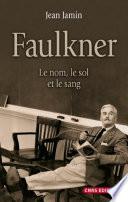
Faulkner
Autore: Jean Jamin
Numero di pagine: 142" Il faut vraiment croire en l'homme pour l'endurer et patienter malgré sa stupidité, sa sauvagerie, son inhumanité ", écrivait William Faulkner. De cette humaine sauvagerie, il fut le peintre implacable, féroce, sourcilleux, tragiquement ironique, montrant que l'altérité est une nécessité mentale autant que sociale pour la construction de soi. Peut-être l'oeuvre de Faulkner vientelle crûment nous dire qu'il n'y a d'autre étranger que celui qu'on s'invente... Une idée-force que cette anthropologie ambitieuse de l'univers faulknérien – une des premières du genre – vient illustrer en restituant la géographie intime de ses personnages, leurs parts d'ombre et de lumière, les " brûlures " de leur langage et les contradictions obsédantes qui les habitent. Thomas Sutpen et sa fille amoureuse de son demi-frère métis caché ; Joe Christmas à l'identité raciale problématique ; Lucius McCaslin engrossant sa fille esclave ; le vieux nègre roublard Lucas Beauchamp... Des Blancs, des Noirs, s'épiant au sein des familles, à l'intérieur des maisons, sur des plantations, qui seront dévastées. Une société, tout un monde plein de " bruit et de fureur " où à...

Sessional Indexes to the Annals of Congress
Autore: United States Historical Documents Institute
Numero di pagine: 1010
Faulkner
Autore: Jean Jamin
Numero di pagine: 222« Il faut vraiment croire en l'homme pour l'endurer et patienter malgré sa stupidité, sa sauvagerie, son inhumanité », écrivait William Faulkner. De cette humaine sauvagerie, il fut le peintre implacable, féroce, sourcilleux, tragiquement ironique, montrant que l'altérité est une nécessité mentale autant que sociale pour la construction de soi. Peut-être l'oeuvre de Faulkner vientelle crûment nous dire qu'il n'y a d'autre étranger que celui qu'on s'invente. Une idée-force que cette anthropologie ambitieuse de l'univers faulknérien - une des premières du genre - vient illustrer en restituant la géographie intime de ses personnages, leurs parts d'ombre et de lumière, les « brûlures » de leur langage et les contradictions obsédantes qui les habitent. Thomas Sutpen et sa fille amoureuse de son demi-frère métis caché ; Joe Christmas à l'identité raciale problématique ; Lucius McCaslin engrossant sa fille esclave ; le vieux nègre roublard Lucas Beauchamp. Des Blancs, des Noirs, s'épiant au sein des familles, à l'intérieur des maisons, sur des plantations, qui seront dévastées. Une société, tout un monde plein de « bruit et de fureur » où à...
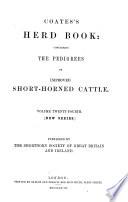
Herdbook Containing the Pedigree of Improved Short-horn Cattle
Numero di pagine: 828Vols. - include the Shorthorn Society's Grading register for beef Shorthorn cattle; v. - include the society's Herd book of poll shorthorns.
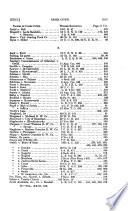
The Ontario reports
Numero di pagine: 778Vedi maggiori dettagli